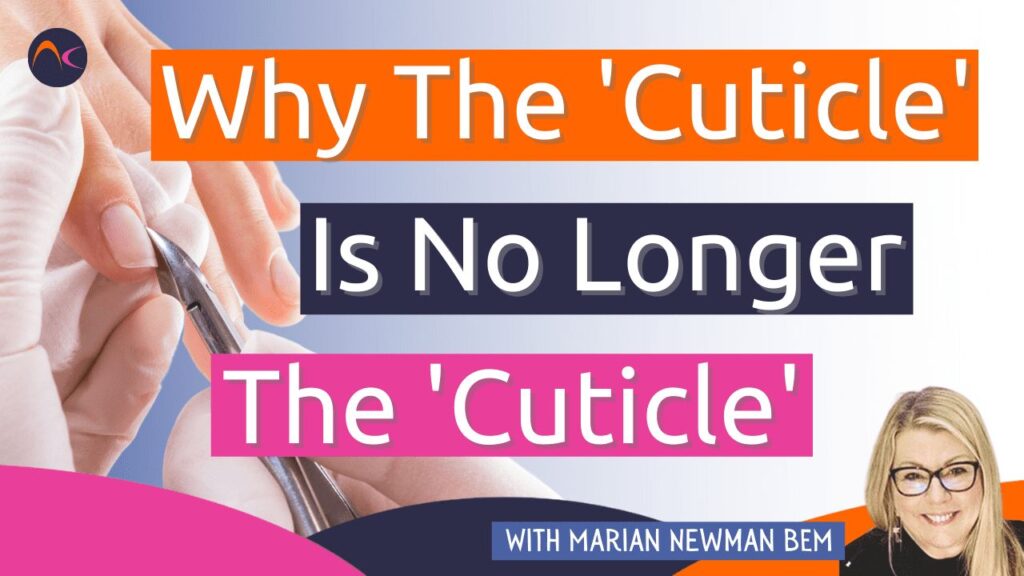I still see lots of people still using the wrong terminology for parts of the nail unit. Also, many others are a bit confused why the ‘cuticle’ is no longer the ‘cuticle’!
Has the nail unit changed?
Of course not. It has always been what it is now!
Why do we now have that big term: proximal nail fold when everyone called it the cuticle?
Why is water soak not generally advised now?
Why is nipping/cutting the PNF not good now?
So many more.
Manicures have been around for decades (actually a century or more in its relatively ‘modern’ form). Originally, it was purely a cosmetic service and the understanding of the area was largely guesswork. Beauty Therapy hadn’t even been ‘invented’ then! Just a bit of facial massage with basic creams like Ponds and maybe a little steaming.
(Did you know that the term ‘Beauty Therapy’ was coined by Wallace Sharps, Founder of the Society of Health and Beauty Therapists in the ’60s, later the FHT and Founder and Director of VTCT much later)
In the ’60’s and ’70’s even into the ’80’s the manicure teaching was started by Revlon. Almost every working manicurist was Revlon trained. Some, who have not updated their education are still stuck in that vibe! Using a ‘buffing paste’ and a chamois buffer!
As time went on, more understanding of, what is now called, ‘the nail unit’ was gained and a much bigger array of nail services were introduced (like ‘artificial nails’ using MMA and all called ‘acrylics’)
When ideas of what was good for the nail unit and anatomical terms were changed I, personally, thought it was because more research was being carried out due to the growth of the pro-industry. This was not correct!
What was happening (as explained to me by Doug Schoon) was that the sector needs to come into line with the true medical A&P and correct terminology used instead of the long-held, guesswork of decades ago.
What many of us have always believed to be the cuticle is now the living proximal nail fold. The cuticle is a thin layer created by stem cells in the eponychium that sheds the dead skin cells of the PNF which stick very strongly to the nail plate to form part of a strong seal against the invasion of pathogens into the matrix.
The eponychium is not the seal at the base of the nail! It is, in fact, on the ventral (underside) of the PNF, cannot be seen but can be damaged.
Pterygium was thought to be the actual cuticle when actually it is an abnormal growth of the PNF.
So many are stuck in the past with all of this understanding and terminology. “I trained 30 years ago so have lots of experience” doesn’t cut it! Times have changed. We need to be more ‘medically’ minded without being medically trained. Tricky!
When working as a nail professional make sure your education is up to date and you are not stuck in the 60’s! Use the correct and accurate terminology from a true A&P point of view.
Elevate this professional career and bring it up to the 21st century. Be ahead of your game! YOU are the pro and your clients need to be convinced of this!
If you want to learn more about the cuticle, including why it is no longer referred to as the cuticle, check out this informative article.


